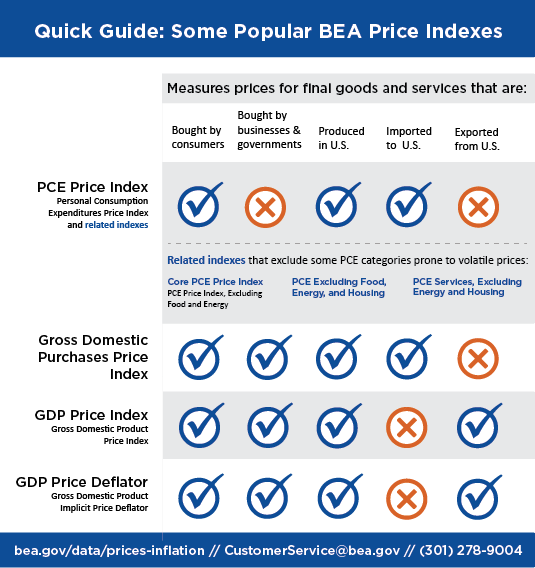
A blog from BEA Director Vipin Arora
BEA’s price index for personal consumption expenditures—the PCE price index—gets a lot of attention when it’s released every month. For good reason: the Federal Reserve and policymakers around the world rely on it as a key inflation gauge. Still, I can’t help comparing it to the quarterback of a football team. Just like the quarterback often seems to be in the spotlight, the same is true for the PCE price index. And just like there are 10 other offensive players on the field who work with the quarterback, we have many other price measures at BEA that complement the PCE price index and work together to paint the economic picture for our country.
This impressive array of price measures has grown up alongside our economic accounts. In fact, there weren’t any BEA price indices available when our first official estimates of national income were released in 1934, and without them, the report couldn’t present estimates in constant dollars.
Yet there was great user demand for such constant-dollar, or “real,” estimates, which are adjusted to remove the impact of prices. Real estimates allow users to compare economic numbers over different periods of time and better see underlying economic activity. This is why we began to develop price measures at BEA.
This development allowed us to begin publishing constant-dollar estimates and corresponding price measures for major series in our economic accounts in 1951. Our first quarterly constant-dollar estimates and price measures for major series were published in 1958, and in both 1962 and 1965 we substantially expanded the detail available for those estimates and prices. Over the years we have continued to expand and improve the price measures developed at BEA.
One of the newer price indexes—introduced in 1980—is now our featured measure of inflation in the U.S. economy. And no, it’s not the PCE price index. It’s the gross domestic purchases price index, which measures the prices of goods and services purchased by U.S. residents, regardless of where the goods and services were produced.
I might compare it to the running back of a football team. The running back gets less attention than the quarterback—just as the gross domestic purchases price index gets less attention than the PCE price index. Yet just as some football teams feature running backs because of their versatility, we feature the gross domestic purchases price index because it’s our broadest gauge of prices inside the country.
